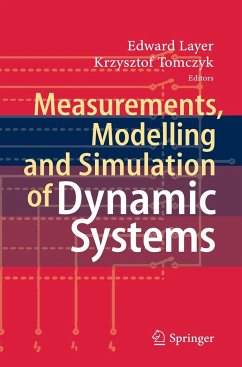A close look at analog-to-digital systems offers insight on dynamic measurement methods in this concise introduction. The construction and properties of measurement sensors are analyzed, as these represent the primary components for all measurement systems.
The development and use of models of various objects is becoming a more common practice in recent days. This is due to the ease with which models can be developed and examined through the use of computers and appropriate software. Of those two, the former - high-speed computers - are easily accessible nowadays, and the latter - existing programs - are being updated almost continuously, and at the same time new powerful software is being developed. Usually a model represents correlations between some processes and their interactions, with better or worse quality of representation. It details and characterizes a part of the real world taking into account a structure of phenomena, as well as quantitative and qualitative relations. There are a great variety of models. Modelling is carried out in many diverse fields. All types of natural phenomena in the area of biology, ecology and medicine are possible subjects for modelling. Models stand for and represent technical objects in physics, chemistry, engineering, social events and behaviours in sociology, financial matters, investments and stock markets in economy, strategy and tactics, defence, security and safety in military fields. There is one common point for all models. We expect them to fulfil the validity of prediction. It means that through the analysis of models it is possible to predict phenomena, which may occur in a fragment of the real world represented by a given model. We also expect to be able to predict future reactions to signals from the outside world.
The development and use of models of various objects is becoming a more common practice in recent days. This is due to the ease with which models can be developed and examined through the use of computers and appropriate software. Of those two, the former - high-speed computers - are easily accessible nowadays, and the latter - existing programs - are being updated almost continuously, and at the same time new powerful software is being developed. Usually a model represents correlations between some processes and their interactions, with better or worse quality of representation. It details and characterizes a part of the real world taking into account a structure of phenomena, as well as quantitative and qualitative relations. There are a great variety of models. Modelling is carried out in many diverse fields. All types of natural phenomena in the area of biology, ecology and medicine are possible subjects for modelling. Models stand for and represent technical objects in physics, chemistry, engineering, social events and behaviours in sociology, financial matters, investments and stock markets in economy, strategy and tactics, defence, security and safety in military fields. There is one common point for all models. We expect them to fulfil the validity of prediction. It means that through the analysis of models it is possible to predict phenomena, which may occur in a fragment of the real world represented by a given model. We also expect to be able to predict future reactions to signals from the outside world.
From the reviews:
"This textbook gives a short introduction to measurements, mathematical modeling, and computer simulation of dynamic systems. The mathematical modeling of dynamic systems is mainly based on systems of linear ordinary differential equations. ... This book is divided into 5 chapters. ... mainly written for students and researchers in engineering disciplines, who are interested in measurements, mathematical modeling, and computer simulation of dynamic systems." (Manfred Tasche, Zentralblatt MATH, Vol. 1185, 2010)
"This textbook gives a short introduction to measurements, mathematical modeling, and computer simulation of dynamic systems. The mathematical modeling of dynamic systems is mainly based on systems of linear ordinary differential equations. ... This book is divided into 5 chapters. ... mainly written for students and researchers in engineering disciplines, who are interested in measurements, mathematical modeling, and computer simulation of dynamic systems." (Manfred Tasche, Zentralblatt MATH, Vol. 1185, 2010)








